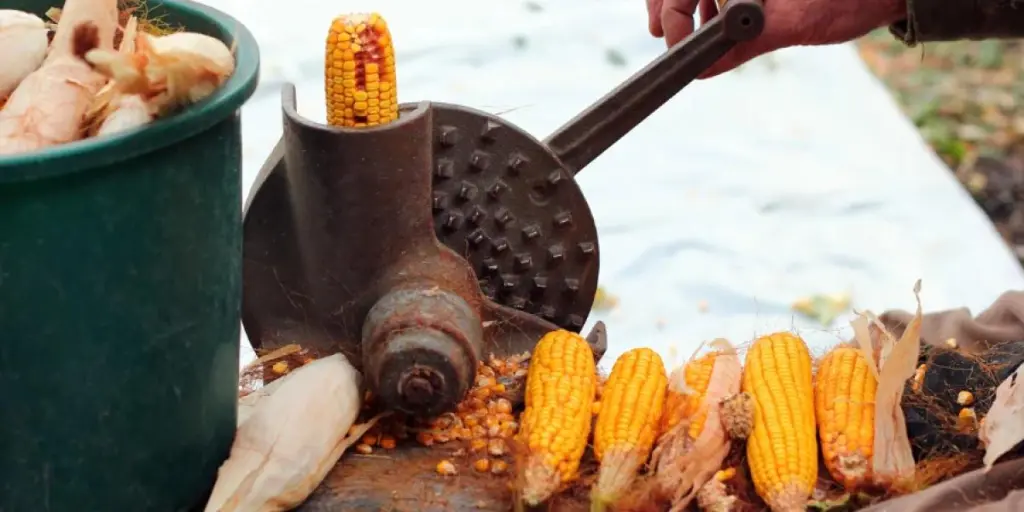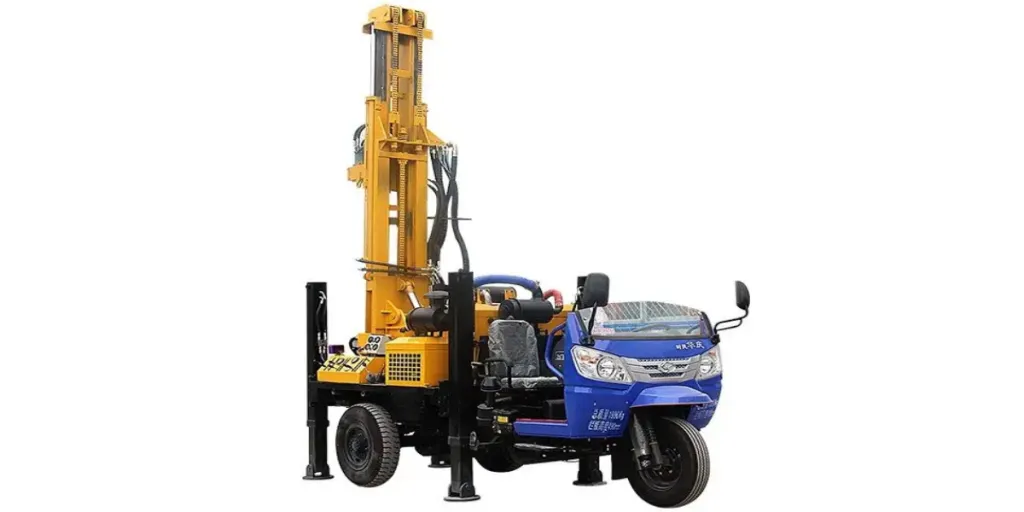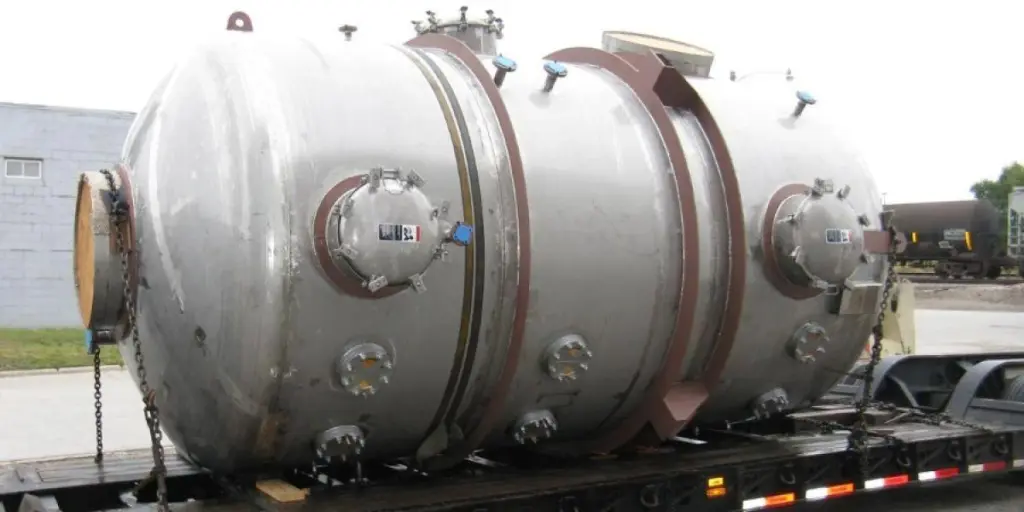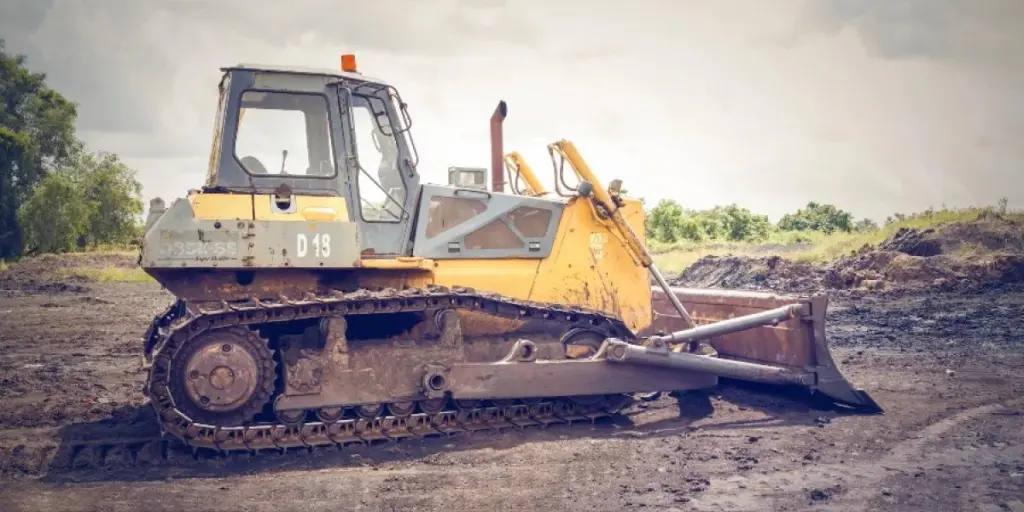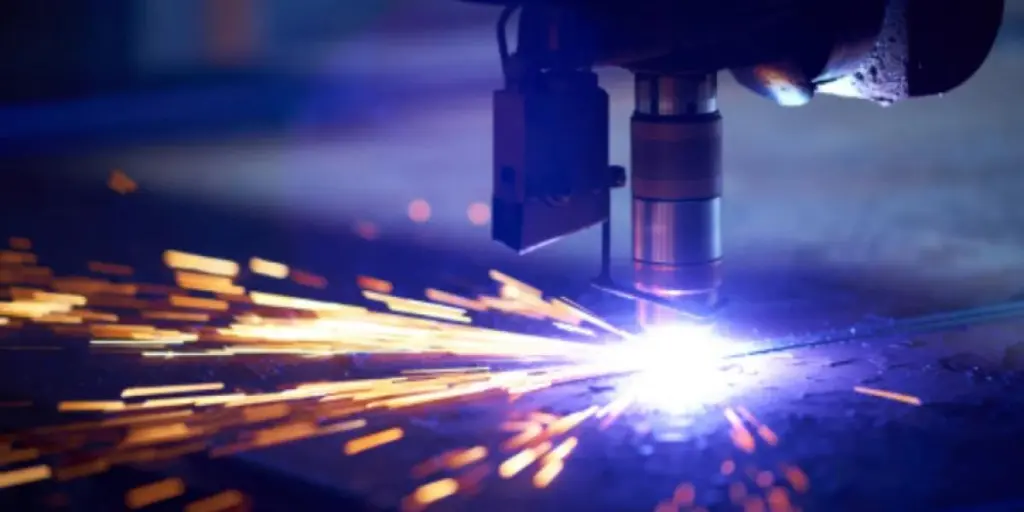Choosing the right maize sheller machine is crucial for any business that deals with the processing of maize. It can mean the difference between efficient and profitable operations, and costly downtime and inefficiency. However, with so many options on the market, it can be difficult to determine which machine is the best fit for your specific needs.
In this guide, we will explore the various factors to consider when selecting a maize sheller machine and discuss the different types of maize sheller machines available in the market.
Table of Contents
The growth of maize sheller market
Factors to consider when buying a maize sheller
Different types of maize shellers
The bottom line
The growth of maize sheller market
The global market for maize shellers is expected to grow at a compound annual growth rate (CAGR) of 5.1% by 2030, from an estimated value of US$ 0.8 billion in 2021. The increasing growth of maize shellers is due to the rising demand for maize as an essential ingredient in animal feed formulations. Another factor attributing to the growth of the maize shellers market is the improved efficiency of seed processing through the use of modernized equipment. This, in turn, ensures a high-quality seed supply for planting and labor reduction.
Lastly, the increasing use of maize in the production of biofuels, population growth, urbanization, and rising income levels are driving demand for maize as a food source, particularly in developing countries. To meet this demand, manufacturers are improving the production capacity and technology of the shellers. The Asia-Pacific region is currently dominating the market due to the high demand for maize in countries such as China and India, which are major producers and consumers of maize. The increasing population and rising income levels in these countries are driving the demand for maize as a food crop, which in turn is driving the demand for maize sheller machines.
Factors to consider when buying a maize sheller
Material selection
To determine which material is best for your maize sheller, it should meet the following few considerations:
- Durable enough to withstand the wear and tear of shelling maize and maintain its structural integrity over time.
- Rust resistant, thus needing less maintenance over time
- Lightweight material for easy movement and use.
- Easy to clean to maintain the hygiene and sanitation of the equipment.
- The material should be able to withstand a harsh operating environment. For instance, if it is going to be used in a wet area, the material should be able to resist rusting and corrosion.
Design consideration
Design is an important factor to consider when selecting a maize sheller as it can affect the efficiency, ease of use, and overall performance of the equipment. A well-designed sheller should be:
- Easy to operate and maintain, with clear instructions and labels.
- Allow for easy access to the parts that need to be cleaned and maintained.
- Ergonomic, so that the sheller is comfortable to use and reduces the risk of injury.
- Safe, to avoid any accidents.
Power and capacity of the machine
Power and capacity are crucial factors in determining a good maize sheller machine. A powerful machine can effectively shell large quantities of maize quickly and efficiently, which is important for commercial operations. The power of the machine can be determined by the type of motor used, with options ranging from electric, gas-powered, or diesel-powered engines. A powerful machine will also have a high-speed shelling rate, which can reduce downtime and increase productivity.
For example, a machine with a power rating of 1.5 kW can process up to 1000 kg of maize per hour, while a machine with a power rating of 2.5 kW can process up to 1500 kg of maize per hour. This indicates that the higher the power rating of a maize sheller machine, the faster and more efficient it will be in shelling maize.
A machine with a high capacity will be able to handle large volumes of maize, which is crucial for commercial operations. Capacity is determined by the size of the hopper, the speed of the shelling drum, and the number of shelling plates. A machine with a high capacity will also have a large feed hopper that can accommodate large volumes of maize, reducing the need for frequent reloading.
The capacity of the machine will also determine the time required to shell a given quantity of maize, which is crucial for meeting production deadlines and maximizing efficiency. A machine with a capacity of 100 kg can process up to 400 kg of maize per hour, while a machine with a capacity of 200 kg can process up to 800 kg of maize per hour.
Rotational speeds
Rotational speed affects the efficiency and effectiveness of the machine. A higher rotational speed means that the sheller can process more maize in a shorter amount of time. For instance, a maize sheller machine with a rotational speed of 400 RPM will produce a higher output capacity than a machine with a rotational speed of 200 RPM.
However, it’s important to note that a higher rotational speed can also increase the risk of damage to the maize kernels and may also produce more debris.
Additionally, if the speed is too high, say 500RPM, it can also cause the machine to vibrate excessively and make it difficult to control. Therefore, it is important to choose a sheller with an appropriate rotational speed that balances efficiency and kernel protection. A maize sheller machine with a rotational speed of 400 RPM is considered ideal.
Ancillary operations
These refer to additional processes that are performed in conjunction with the main task of shelling maize. They may include:
- Cleaning, grading, and sorting
- De-husking
- Bagging and shelving
A sheller that has built-in ancillary operations can greatly reduce the time and labor required for these tasks, thus increasing efficiency. It can also save space and resources, eliminating the need for separate equipment for each task.
Different types of maize shellers
Hand-crank maize shellers
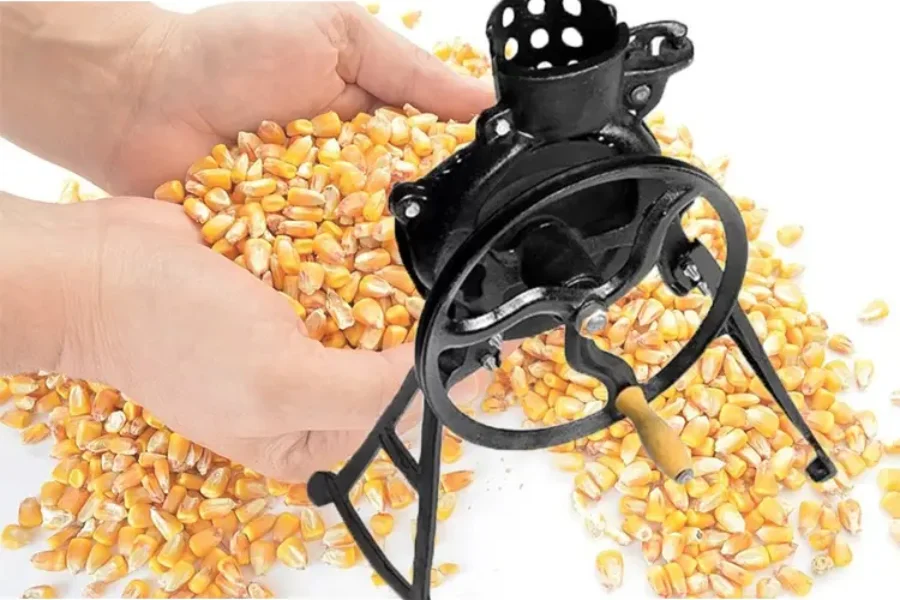
These are manually operated maize shellers that use a hand-crank mechanism to remove the kernels from the cob.
Pros
- Low costs
- Easily portable
- Low maintenance
- Easy to operate
Cons
- Require more time and labor
- Lower capacity; not suitable for large-scale operations
- Require physical exertion
- Limited features
Electric maize shellers
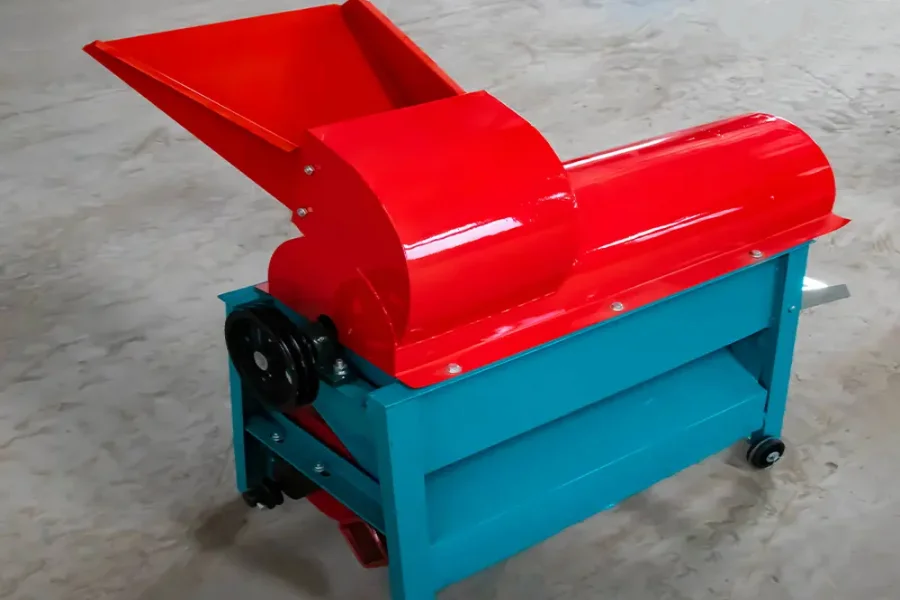
Electric maize shellers are powered by electricity and use motors to drive the shelling operations.
Pros
- High throughput rates compared to manual shellers
- Low labor requirement
- Consistent; low variations in the quality of the maize shelled
- Versatile – can be used for any type of maize, size, and moisture levels
Cons
- Higher costs compared to manual shellers
- Requires regular maintenance and repairs
- May produce noise while shelling
- Maybe a safety hazard if not properly operated
PTO/ Tractor maize shellers

PTO (Power Take-Off) or tractor-driven maize shellers are powered by a tractor or other type of farm equipment.
Pros
- Readily available power source
- Mobile and can be moved to different locations on the farm
- High shelling capacity
Cons
- Regular maintenance and repairs can be costly
- Loud noises
- Large and bulky
- Expensive
Automatic maize shellers

These maize shellers use a combination of mechanical and electrical systems to perform the task automatically.
Pros
- Faster compared to manual shellers
- Minimal variation in kernel size or quality
- Labor-saving
- Some may have automated cleaning
Cons
- Expensive to purchase and maintain
- Power may not be available in many locations
The bottom line
By considering the above factors, you can ensure that you choose a machine that is well-suited to your specific needs and requirements, and that will provide the best value for your business.
For example, an automatic maize sheller with automated cleaning and grading systems may be the best option if your business requires high throughput and efficiency. On the other hand, if your business is located in an area with a limited power supply, a manual or semi-automatic maize sheller may be a more appropriate choice.
